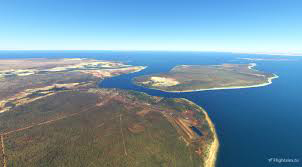
Aboriginal occupation at the shell matrix site of Wurdukanhan
Lardil
Summary...
Analysis of Wurdukanhan demonstrates high shellfish taxa diversity, high rates of natural shell predation and high densities of foraminifera throughout the deposit demonstrating a natural origin for the assemblage.Claims for mid-Holocene Aboriginal occupation at the shell matrix site of Wurdukanhan, Mornington Island, Gulf of Carpentaria, Australia, are reassessed through an analysis of the excavated assemblage coupled with new surveys and an extensive dating program. Memmott et al. (2006, pp. 38, 39) reported basal ages of c.5000–5500 years from Wurdukanhan as ‘the oldest date yet obtained for any archaeological site on the coast of the southern Gulf of Carpentaria’ and used these dates to argue for ‘a relatively lengthy occupation since at least the mid-Holocene’. If substantiated, with the exception of western Torres Strait, these claims make Mornington Island the only offshore island used across northern Australia in the mid-Holocene where it is conventionally thought that Aboriginal people only (re)colonised islands after sea-level maximum was achieved after the mid-Holocene. Our analysis of Wurdukanhan demonstrates high shellfish taxa diversity, high rates of natural shell predation and high densities of foraminifera throughout the deposit demonstrating a natural origin for the assemblage. Results are considered in the context of other dated shell matrix sites in the area and a geomorphological model for landscape development of the Sandalwood River catchment.
Contact Details:
Geraldine Jacobsengej@ansto.gov.au
